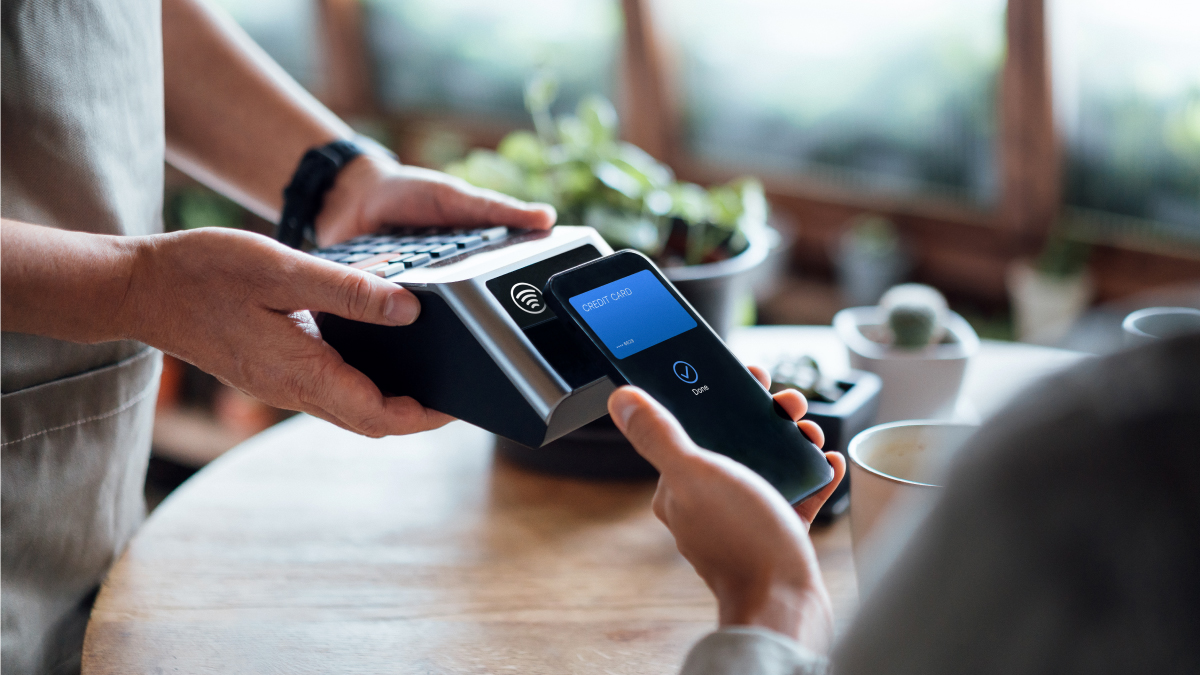Is cash still king? A quick search provides compelling arguments for both sides of this coin. One thing, however, is certain – digital payments are on the rise. According to a recent report published by Global Market Estimates, the global digital payments market is projected to grow from USD 83.1 billion in 2023 to a whopping USD 188.2 billion by 2028. With this level of growth expected, it’s important to understand the evolution of digital payments, their advantages and disadvantages and what to expect in the future.
What are Digital Payments?
Digital payments have become the standard for a vast majority of consumers and businesses worldwide. Digital payments consist of the transfer of value from one payment account to another using a digital device or channel. This includes payments made via bank transfers, mobile money, QR codes, and other digital payment methods like credit, debit and prepaid cards.
The description encompasses a wide range of digital payment options, making the flipside of the question ‘what isn’t a digital payment?’ easy to answer. Non-digital payments are transactions using cash or checks.
The Digital Payment Evolution
Electronic funds transfers (EFTs) have roots that can be traced back to the 1870’s when Western Union introduced EFT. This overarching term encompasses automated clearing house (ACH), wire transfers, instant eWallet payments, and other digital payment methods.
But it was in 1994 that digital payments became popular when the Stanford Federal Credit Union started offering online banking. Seeing the potential for digital payments, other financial institutions soon followed suit and began to offer electronic cash alternatives like digital cash, e-money, and tokens. 1994 also saw the birth of Amazon, propelling e-commerce into the mainstream. This set the stage for other verticals to join the digital payment revolution.
Digital payments continued to evolve and in the late 1990’s PayPal entered the market, becoming one of the first companies to allow payments via mobile payment apps and email. After the introduction of Google Wallet in 2011, the floodgates were open and the digital wallet quickly gained acceptance. This prompted organizations – from Airbnb to Zions First National Bank (and everything in between) – to accept digital payments.
Today, we have a wide variety of digital wallets to choose from including Apple Pay, Cash App, Dwolla, Google Pay, Samsung Wallet, Venmo, and Zelle. This not only simplifies the purchasing and payment processes but offers additional functionality. Now funds transfers, coupon storage, loyalty cards, membership cards, tickets, boarding passes, vaccine records, the ability to make recurring payments and more are at our fingertips. In 2017, the Telegram payment bot launched providing yet another channel to accept payments for products and services rendered.
Fast forward to the present day
Now we find ourselves in the midst of a transition to EuroPay, MasterCard and Visa (EMV), where smartphones, smart watches, and other smart devices are equipped with the ability to process near-field communication (NFC) mobile payments. What does this mean for consumers and businesses?
Virtually anything they want to purchase can be paid for using a smart device! Things like gas, food, software, cloud storage, furniture and more. With the increasing digitalization of our world, the digital revolution is not only here but is predicted to be the cornerstone for a new digital economy.
Advantages of Digital Payments
The advantages of using digital payments – whether as a payee or payer – are plentiful. Let’s look at the top 10 advantages of digital payments.
1) Speed
Transactions happen almost instantaneously. The payee receives funds almost immediately which improves cash flow and boosts financial stability.
2) Convenience
Transactions can happen anytime and from any location with an internet connection. This eliminates the need to carry large sums of cash or a checkbook.
3) Traceability
You can quickly and easily track and record transactions, which enhances transparency and accountability.
4) Costs
From staff to handle sales and payments to printing checks, etc., manual processes are replaced by automation. This enables electronic sending and receiving of invoices and payments. Manual labor is reduced further when automated workflows are deployed, reducing costs and lessening errors.
5) Recurring Payments
Online payments have simplified and expedited the arduous recurring payment processes for subscription-based businesses.
6) Visibility and Control
When digital payment options are integrated into the accounts payable (AP) system, invoice approval and payment authorizations are easier to monitor and control. It also improves visibility into AP processes for both the business and its vendors.
7) In-Country and International Payments
Provides the ability to monitor the full lifecycle of the payment journey – from payment initialization and tokenization through payment processing, settlement, and chargeback notifications – allowing for comprehensive reconciliation between financial systems.
8) Payment Options
Offer customers a wide range of online payment options. This has a direct effect on transaction completion and ultimately profitability.
9) Customer Experience
The sheer convenience of digital payments provides for an enhanced shopping experience. In turn this increases customer satisfaction and improves customer loyalty.
10) Security
Keeping customer data protected and confidential is top of mind for businesses large and small. Leveraging enterprise-grade security that follows the PCI and GDPR compliance standards for credit card payments, billing systems help organizations to keep data secure. Application-level encryption provides a secure approach to protect enterprise data. It does this by going beyond simply securing data at-rest through adherence to FIPS 140-2 encryption Level 2 and Level 3 standards.
Additionally, security measures such as two-factor authentication (2FA) require two separate and distinct forms of identification to access data and information. The first factor is typically a password and the second could be a code that is sent via text to the user’s smartphone or even biometrics using a fingerprint, face, or retina. Some enterprises have taken security a step further by implementing anti-fraud systems that use artificial intelligence/machine learning (AI/ML) to monitor and detect unusual behavior or suspicious activity.
Disadvantages of Digital Payments
As with everything, where there are advantages there are also disadvantages. Below are the most common disadvantages associated with digital payments.
1) Security
Rising cyber security threats and increasingly sophisticated fraudulent methods and tools also lend to security disadvantages. On a global basis, eCommerce losses resulting from online payment fraud was estimated at USD 41 billion in 2022 and is expected to grow to USD 48 billion in 2023.
Prevalent among cybercriminals are digital wallet payment scams, QR code fraud, and crypto fraud, as well as fake account registration fraud and scams such as phishing, smishing, and vishing. Further, when a data breach occurs or the platform is hacked, not only does the business lose money but its reputation may also be damaged.
2) Technology
Glitches, server outages, and other technical issues can leave the buyer without the means to pay for their purchases. Additionally, since digital payments rely on internet access, purchases may not be possible where internet access is unreliable or limited.
3) Fees
For every credit or debit card swiped or tapped, the seller is charged a processing fee. Let’s consider digital payment fees from a staged vs. pass-through digital wallet perspective.
A staged digital wallet uses multiple ‘stages’ such as the funding stage and the payment stage, where the wallet acts as a go-between. The staged digital wallet typically incurs a higher transaction fee, depending on how the wallet operator passes on the fee. Some examples include PayPal, Google Wallet and Square Cash.
Typically, pass-through digital wallets like Apple Pay, Android Pay, and Samsung Pay carry comparable fees to purchases made using physical credit cards. This digital payment type leverages the card payment information used in the transaction, which is passed to the issuer and card network.
4) Overspending
It’s relatively easy to track a dwindling amount of cash or a checking account register that is rapidly heading to overdrawn status. What’s not as immediately obvious is the number of purchases made and the amount spent using electronic payments.
Digital payments have their own unique drawbacks; however, the fact remains they are continuing to transform how transactions are processed. As technology continues to advance, digital payments will become more advanced, accessible, and user-friendly.
The Future of Digital Payments
With an ever-increasing number of transactions, digital payment methods and options are rapidly evolving. According to Statista, there are approximately 950 million users that utilize online mobile payments and this figure is expected to surge to 1.31 billion users this year. Its ongoing pervasiveness continues to be underpinned by technology advancements, including AI/ML, big data, blockchain, the Internet of Things (IoT), networks, metaverse, software-as-a-service (SaaS), etc.
The new digital economy is underway where purchasing and payment methods are being reimagined, reshaping the global marketplace. Some trends quickly making their way into the future include:
- UBU mobile wallets that enable customers to fund their wallet via a card or EFT
- Purchasing goods or services via cryptocurrency and blockchain
- Contactless payments using mobile phones or wearables
- The transition from open banking to open finance which uses application programming interfaces (APIs) to provide interconnectivity between financial providers and businesses
- The ability to go beyond in-store and online shopping to a 3D-enabled digital space for lifelike online shopping experiences
Are you Ready for the New Digital Economy?
We live in a rapidly changing world and nowhere is this more apparent than in how we shop, purchase, and pay for products and services. Customers want a seamless purchasing journey with fast, convenient, simple and personal experiences. Enterprises want to speed the transaction process, reduce or eliminate manual tasks and errors, improve efficiency, and ultimately keep cash flowing.
Appeasing both sides lies in digital payments. However, digital payments require an agile organization with flexibility that extends to your billing processes.
The need for enhanced business and billing agility is the driving force behind more flexible operational support solutions. Built with future billing and payment requirements in mind, BillingPlatform provides a flexible and scalable billing solution that empowers companies to monetize any and all revenue opportunities.
By partnering with the leader in billing and revenue management, you can easily adapt to any billing or payment need – today and into the future. Is your business ready for the new digital economy? Take a free tour of BillingPlatform to see how we can help you transform.



